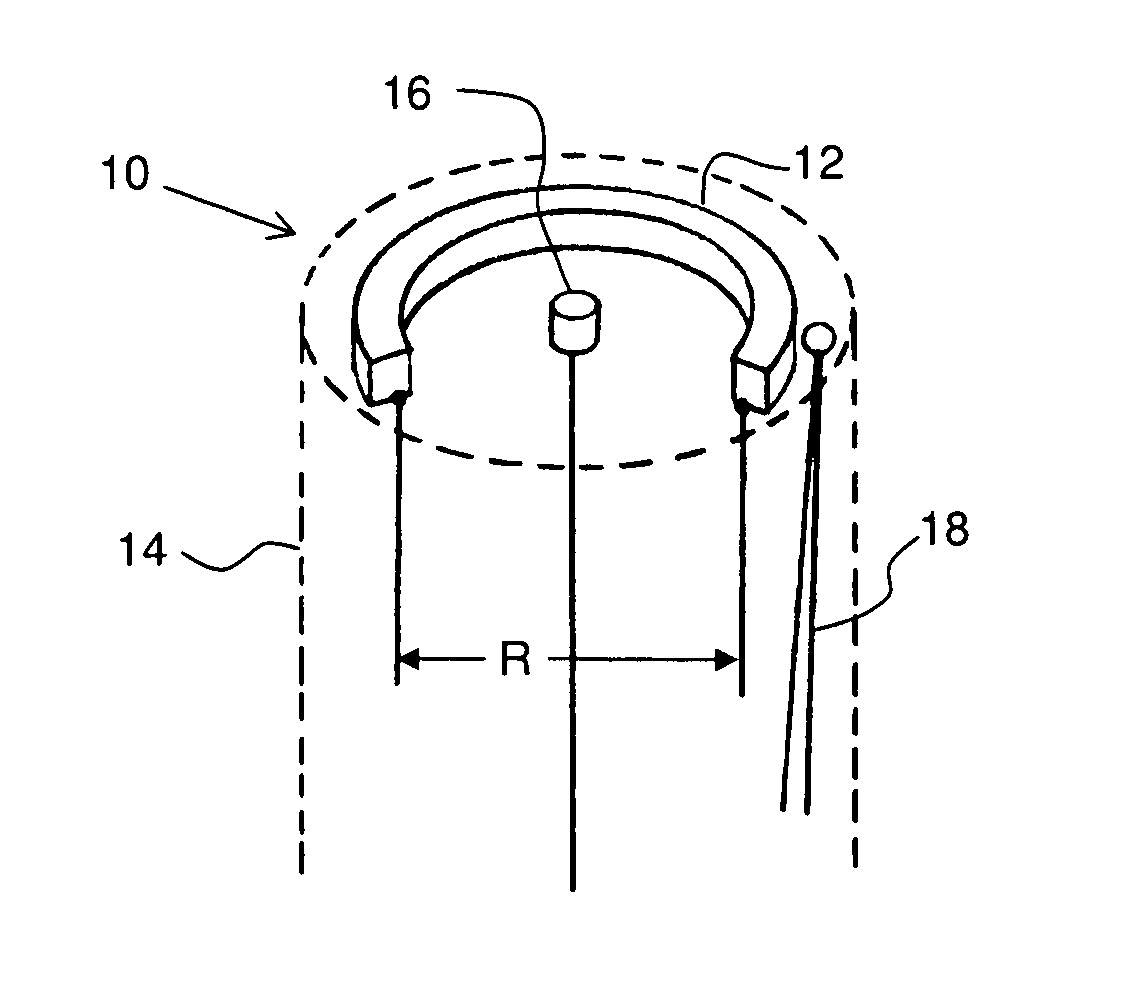Localized corrosion monitoring device for limited conductivity fluids
a technology of conductivity fluid and monitoring device, which is applied in the direction of liquid/fluent solid measurement, material electrochemical variables, instruments, etc., can solve the problems of loss of production, localized corrosion of equipment, and corrosion failure in many oil and gas production systems, so as to remove the effect of temperature swing and accurately measure the temperatur
- Summary
- Abstract
- Description
- Claims
- Application Information
AI Technical Summary
Benefits of technology
Problems solved by technology
Method used
Image
Examples
Embodiment Construction
[0028]Methods and apparatus for the detection and characterization of the corrosion behavior in systems where localized corrosion occurs (in one non-limiting embodiment, in the form of pitting) and is quantitatively evaluated are described. The severity, frequency and time / space distribution of the localized events may be determined from potential and current measurements recorded from the corroding systems.
[0029]More specifically, in one non-limiting embodiment, localized corrosion has been determined semi-quantitatively previously by measuring the galvanic current between two electrodes and monitoring the potential of the couple using a third reference electrode. This is typically known as current / voltage (electrochemical) noise (ECN). The technique correlates the two signals using a range of mathematical methods to calculate the general corrosion rate (Rp=ΔV / ΔI) and estimate the likelihood of localized corrosion (LI=σi / irms), where LI refers to Localization Index, σi refers to th...
PUM
| Property | Measurement | Unit |
|---|---|---|
| Density | aaaaa | aaaaa |
| physical thicknesses | aaaaa | aaaaa |
| thicknesses | aaaaa | aaaaa |
Abstract
Description
Claims
Application Information
 Login to View More
Login to View More - R&D
- Intellectual Property
- Life Sciences
- Materials
- Tech Scout
- Unparalleled Data Quality
- Higher Quality Content
- 60% Fewer Hallucinations
Browse by: Latest US Patents, China's latest patents, Technical Efficacy Thesaurus, Application Domain, Technology Topic, Popular Technical Reports.
© 2025 PatSnap. All rights reserved.Legal|Privacy policy|Modern Slavery Act Transparency Statement|Sitemap|About US| Contact US: help@patsnap.com



